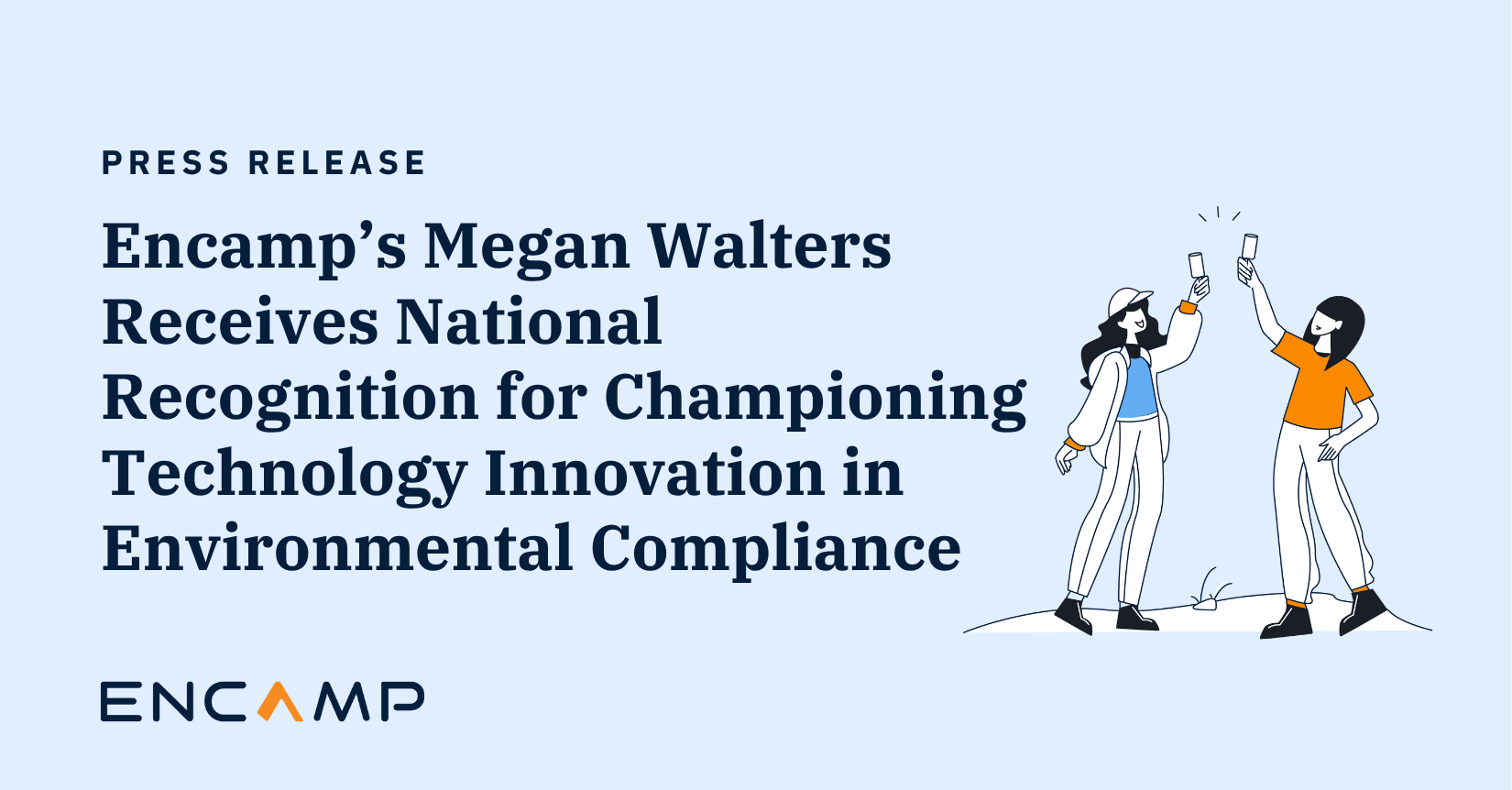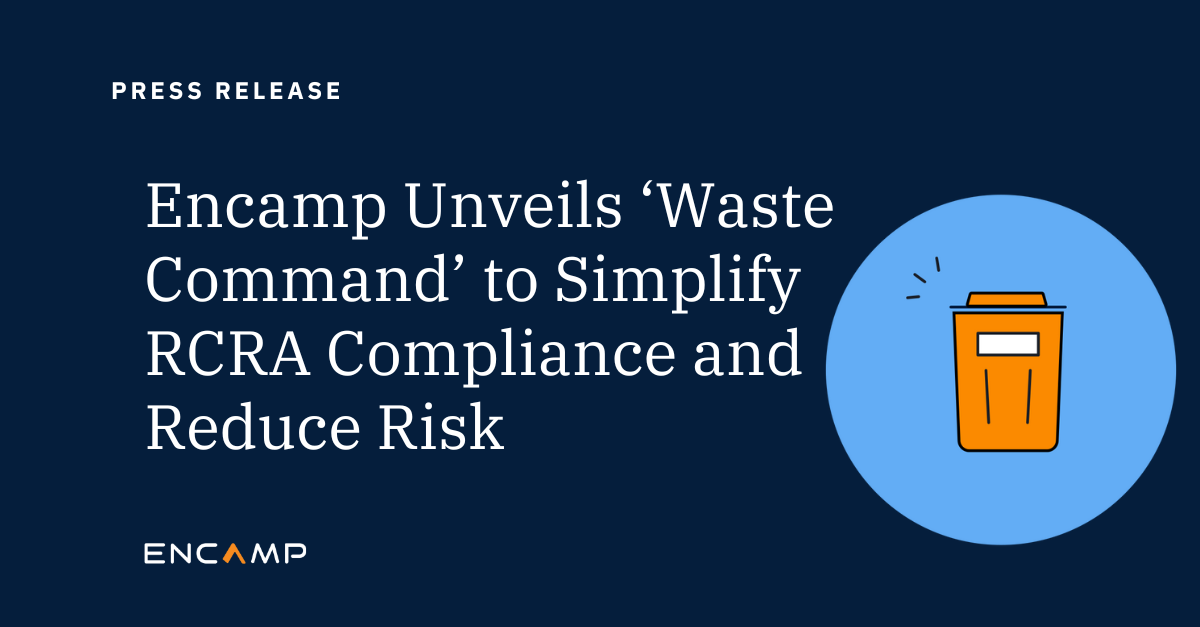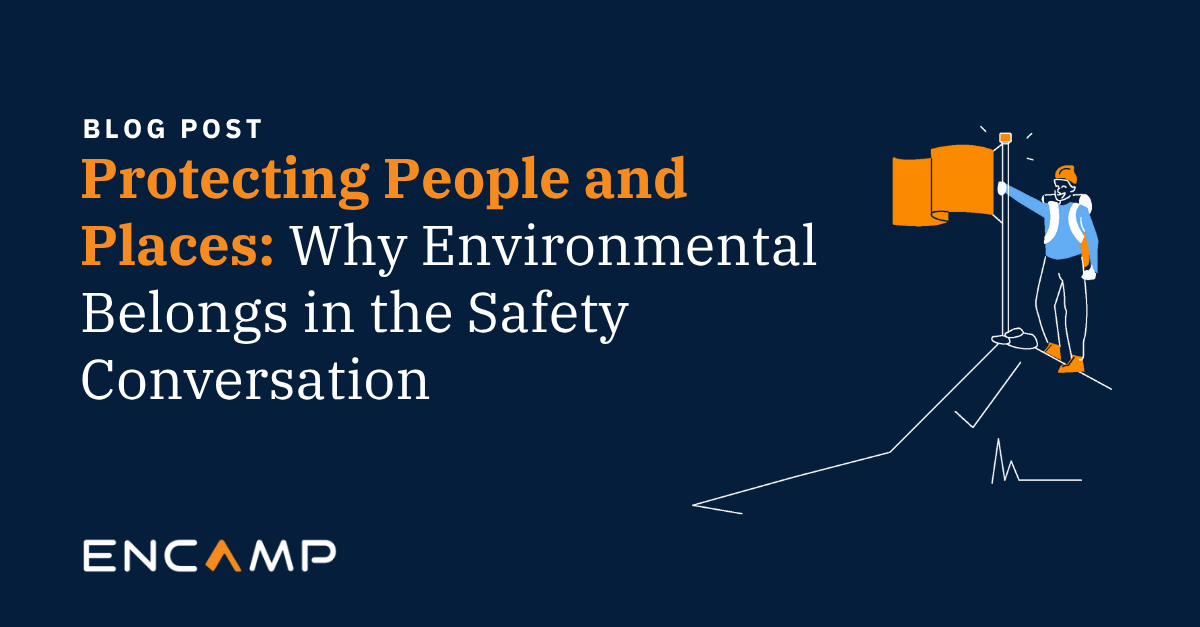Katie Waskom is a Program Manager at Encamp, and is one of the top proponents of our mission to create a world where good for business can equal good for the environment. Given the growing relationship between environmental compliance and sustainability, we got her thoughts on the current state of sustainability, and how digital transformation fits into the sustainability equation with advancements in environmental compliance management and reporting.
Here’s what Katie had to share (responses have been edited for clarity and length).
Putting Environmental Compliance and Sustainability in Perspective
Where did your interest in environmental compliance and sustainability start?
I first took an interest in sustainability in college when I was part of an on-campus initiative and recycling program. Then when I studied abroad in Germany, my course work was in sustainability. Germany is extremely forward thinking in those terms, and they actually embed sustainability in their laws and environmental regulations. That’s where I learned what being sustainable really looks like — how it affects some 4,500 German companies and plays out in day to day life, how easy it is to transition, and especially how environmental compliance and sustainability work together.
After college, I took what I learned in Germany to my first job, which was at Cummins, Inc. Cummins is a global manufacturer of power systems for industries including trucking, agriculture, mining, rail, shipping, and others, and they have an extensive ESG | Sustainability Reporting program. They had some lofty goals for sustainability while I was there, and a lot of pieces to still put in place. So it was a very good experience. But Encamp is where the environmental compliance aspect has come into a much clearer focus.
How would you define sustainability and its current state?
Sustainability applies to a lot of different things. Right now, the sustainability movement is based largely on the three pillars of environmental, social, and economic concerns. For businesses in particular, an effective sustainability program considers how such an initiative gets paid for and its economic benefit, plus the initiative’s social reach and who will benefit. Businesses also want to show they’re good stewards of the environment. This is where environmental compliance and sustainability are becoming more aligned.
As an investment decision-making criteria, sustainability reporting is becoming more and more critical… It allows people to determine a company’s stance on social issues and protecting the environment.
Yet as ESG has taken center stage, sustainability has increasingly involved environmental and social governance as a financial component, especially for investing. This is why sustainability reporting is so critical now, since it allows people to determine a company’s stance on social issues and protecting the environment as investment decision-making criteria.
Writer’s note: As the Corporate Governance Institute says, Environmental, Social, Governance criteria are “a set of standards for how a company operates regarding the planet and its people.” (See our related Encamp blog on ESG.)
How does digital transformation contribute to a company’s sustainability cause?
Technology contributes to the mix of environmental compliance and sustainability in multiple ways. For a company’s sustainability program, knowing where data originates and where it resides is integral to pursuing sustainability goals. Encamp’s unified data system, in particular, enables companies to centralize compliance data and validate its sources and quality. Data also becomes more visible for compliance reporting, which lets compliance teams and other organizational stakeholders track and QC/QA data in a more thorough manner to ensure its accuracy.
 Also on behalf of our customers, we partner with a non-profit called One Tree Planted to plant a tree somewhere in the world for every Tier II report a customer files using Encamp. The effort ties directly to carbon offsetting. Since 2018 when Encamp started working with One Tree Planted, we’ve had more than 18,000 new trees planted!
Also on behalf of our customers, we partner with a non-profit called One Tree Planted to plant a tree somewhere in the world for every Tier II report a customer files using Encamp. The effort ties directly to carbon offsetting. Since 2018 when Encamp started working with One Tree Planted, we’ve had more than 18,000 new trees planted!
Another positive contribution for sustainability is that advancements in digital technology make data management and reporting more efficient with a digital transformation approach. Along with digitizing their compliance records, EHS teams can turn report compilation tasks into standardized, sustainable processes through automation. In addition to centralizing compliance data, for instance, the Encamp solution also automates final report submissions to all applicable regulatory agencies at the federal, state and local level. Depending on the number of facilities they have to file compliance reports for, our customers routinely save hundreds of hours every year just in the reporting process.
How can businesses drive sustainability efforts by way of compliance?
Back to sustainability’s environmental aspect, companies can reduce their carbon footprint significantly just by adopting sustainable business processes. This is why environmental compliance technologies like Encamp continue to build more automation into the process for compliance data and reporting management, which continually improves productivity by maximizing technology resources as well as human resources.
For social responsibility, environmental compliance enables companies to report hazardous chemicals they manufacture, use or store on-site to regulatory agencies. With consistent monitoring, environmental compliance and sustainability goals alike are easily tracked and achieved. Here again, utilizing a unified data system provides comprehensive monitoring capabilities to know the status of a facility’s chemical list and inventories at all times and stay in continuous compliance.
When a company’s compliance program becomes sustainable this way, it benefits nearby communities and society as a whole — which can enhance a company’s environmental responsibility as well as its brand, customer base, and even decision-making and profitability. This is what we mean at Encamp when we say what’s good for business can be good for the environment.
Lastly for the economic part of sustainability, non-compliance with environmental regulations can be costly in more ways than one. For the most severe or repeated violations, financial penalties and legal fees can easily reach six figures, or sometimes in the millions. But unsustainable practices for compliance and reporting management can be also expensive because they’re largely inefficient and often fail to put the right resources to use. Sustainable business practices for environmental compliance can help companies and their EHS operations pinpoint areas of improvement and reduce such inefficiency, including costs.
What is your outlook for sustainability in the next few years?
I think sustainability is definitely a topic people are becoming more aware of. And whether as consumers or B2B decision-makers, they’ll want to do business with companies that are like minded. This is a really powerful dynamic, and will continue to make environmental compliance and sustainability a package deal for businesses and consumers alike who want to protect the environment and take a sustainable approach to doing it.
I also see the economic aspect of sustainability being an even greater consideration for investors than ESG has already made it. If a business wants to attract investors, expand operations, or even position itself for acquisition, its sustainability efforts will have to be of top level importance in the eyes of potential investors as well as customers. In that sense, a company’s sustainability efforts are visible. They’re tangible. And especially with a well-managed sustainability program, businesses can make a positive impact with it.
Organizationally, larger enterprises will continue to make the most impact with sustainability programs. Primarily, they have bigger carbon footprints that benefit from sustainable practices. But larger brand-name companies also tend to have boards of directors who are very forward thinking toward environmental and social causes. They’re environmentally and socially responsible, naturally, but they also understand how their businesses are perceived by the public. And they certainly have the financial and economic clout to promote sustainability.
These enterprises will increasingly set the tone for companies of all sizes to implement sustainability initiatives going forward. Environmental compliance and sustainability will also continue to become a common cause for businesses in general.
Transforming the way enterprises stay in compliance
Encamp is on a mission to create a world where good for business can equal good for the environment. We help enterprises transform compliance programs and human processes into a technology-driven system that lays the foundation for accurate and ongoing environmental compliance through a blended method of intelligent high-tech solutions and high-touch expert support.
Tom Bailey
Tom is the Senior Content Writer at Encamp. And like all other Encampers, he’s in tune with the environment and what happens to it. He’s been writing about creative technology solutions for longer than he cares to admit.

 Also on behalf of our customers, we partner with a non-profit called
Also on behalf of our customers, we partner with a non-profit called 

